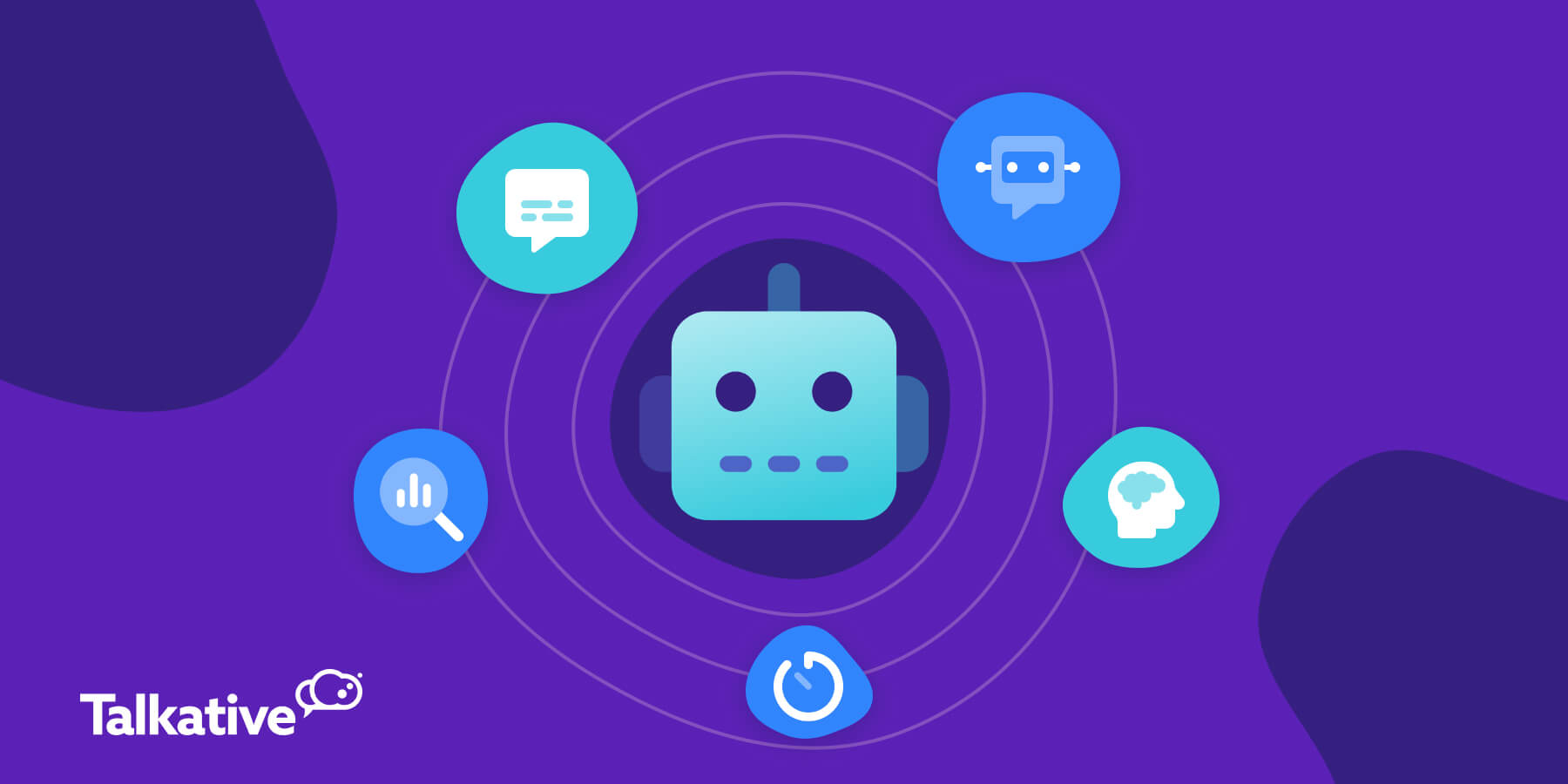When I first encountered chatbots, I was fascinated by their ability to communicate like humans and provide instant responses. They have become a common feature in websites, apps, and messaging platforms, often popping up to ask, “How can I help you today?” But what exactly is a chatbot, and how does it work?
In simple terms, a chatbot is an AI-powered program designed to simulate conversation with human users, either through text or voice. They are used for a variety of purposes, from answering customer service queries to engaging users in more complex interactions. Let me explain how chatbots function and how they manage to hold conversations that seem almost human-like.
1. What is a Chatbot?
A chatbot is a software application that interacts with users, typically over text, although some use voice commands. They operate based on pre-set rules or AI, handling tasks such as answering frequently asked questions, offering recommendations, or even helping with tasks like booking appointments.
We often encounter two main types of chatbots: rule-based and AI-powered. Rule-based chatbots follow a specific flow of conversation and can only respond to certain questions. In contrast, AI-powered chatbots, especially those using Natural Language Processing (NLP), have the ability to learn and understand various inputs. They don’t just respond to simple commands; they interpret what users say and reply more intelligently.
2. How Does a Chatbot Work?
I realized that the way chatbots work varies depending on their complexity. Some chatbots rely on predefined rules, while others use advanced AI and machine learning algorithms. Let me walk you through the different ways these systems operate.
Rule-Based Chatbots:
These chatbots function based on scripts or decision trees. They follow a structured path, guiding users through the conversation with pre-set options. You’ve likely seen these on websites where you click on a button to choose an option, such as “Check Order Status” or “Get Help.” In comparison to more advanced chatbots, rule-based ones are simpler, but they are still effective for straightforward tasks.
For instance, if I ask a rule-based chatbot what the weather is like, it will only respond if it’s been programmed to recognize that question. It won’t provide any information if the question doesn’t match its set commands. Despite being limited, these bots work well for handling basic tasks and can offer quick assistance without overwhelming the user with options.
AI-Powered Chatbots:
On the other hand, AI-powered chatbots, including AI girlfriend chatbots, use machine learning and NLP to process and interpret language. They don’t rely solely on rules but adapt to user input in a more flexible way. I’ve seen that they can handle complex queries, responding in a natural and conversational tone.
Specifically, NLP helps AI chatbots, such as AI girlfriend chatbots, understand the meaning behind user input. For example, if you say, “I want to buy shoes,” the chatbot can interpret the intent behind the words and offer relevant recommendations. Not only can they answer specific questions, but they can also learn from previous conversations, improving their responses over time. Eventually, these NSFW chatbots feel more like talking to a real person, rather than a machine.
3. The Key Components of a Chatbot
While chatbots may seem simple from a user’s perspective, their operation involves multiple components working together. Let me break down the key elements that make chatbots function efficiently.
- Natural Language Processing (NLP):
NLP enables chatbots to understand and process human language. It breaks down text into meaningful chunks, allowing the chatbot to interpret what the user is saying. In particular, NLP is crucial for AI chatbots, as it helps them handle more complex and varied input. - Machine Learning (ML):
Machine learning plays a role in training chatbots. I’ve learned that as chatbots interact with users, they collect data, which they use to improve their future responses. Consequently, the more users interact with a chatbot, the smarter and more personalized the bot becomes. - Backend Integration:
A chatbot’s backend integration allows it to perform actions, such as pulling up order details or checking product availability. We often see this in customer service chatbots, where they can access databases and provide real-time responses based on user queries. - User Interface (UI):
The chatbot’s user interface is what we interact with. Whether it’s a chat window on a website or a messaging app, the UI makes it easy for us to communicate with the bot. In some cases, we may use voice commands instead of text, especially in voice-activated chatbots like Amazon Alexa or Google Assistant.
4. Benefits of Chatbots
Obviously, chatbots provide several benefits to both businesses and users. From my experience, they can handle tasks that would otherwise require human intervention, saving time and resources. However, they also offer unique advantages that go beyond simple automation.
- 24/7 Availability:
Unlike human agents, chatbots are always available. If you need help in the middle of the night, you can still get an answer. This is especially useful for businesses that want to provide round-the-clock customer service without needing to hire additional staff. - Handling Repetitive Tasks:
We’ve all seen how frustrating it can be for customer service agents to handle the same question over and over. Chatbots excel at answering frequently asked questions, such as “What are your business hours?” or “How can I reset my password?” Not only do they save time for the user, but also for the business. - Cost-Effective:
For businesses, chatbots are a cost-effective way to handle customer queries without hiring more staff. Admittedly, they don’t replace human support entirely, but they can handle a large volume of simple queries, reducing the workload for human agents.
5. Chatbots in Different Industries
Chatbots are not limited to one industry, and their versatility is one of the reasons why they’ve become so popular. In comparison to traditional customer service channels, chatbots offer an immediate and interactive solution.
- Retail and E-Commerce:
Retailers often use chatbots to help customers browse products, make purchases, and track their orders. They provide personalized recommendations based on user preferences, which can boost sales and improve customer satisfaction. - Healthcare:
In the healthcare industry, chatbots help patients book appointments, get health information, and manage prescriptions. They can also offer reminders for medication or follow-up appointments, ensuring that patients receive the care they need. - Banking and Finance:
I’ve noticed that chatbots in the banking sector are useful for checking account balances, transferring money, and even offering financial advice. They help customers handle their finances quickly and efficiently without needing to visit a bank branch.
6. Challenges Chatbots Face
Despite their growing popularity, chatbots aren’t without challenges. While they can handle simple tasks well, they may struggle with more complex or emotional queries. This includes areas like AI sexting, where the chatbot might be expected to handle sensitive or intimate conversations. Sometimes, users become frustrated when a chatbot fails to understand their request, especially if they’re seeking help with a nuanced issue.
In particular, AI-powered chatbots, including those used for AI sexting, still have limitations in fully replicating human empathy and understanding. Even though they can simulate conversation well, there’s still a noticeable gap when it comes to emotional intelligence. Similarly, businesses must ensure that their chatbots are constantly learning and improving to meet user expectations.
Conclusion
Chatbots are a fantastic tool for businesses and users alike, providing instant responses, handling repetitive tasks, and offering 24/7 support. We can clearly see their impact across industries like retail, healthcare, and finance. Despite some limitations, especially with complex queries, chatbots are here to stay and will only become more advanced.



